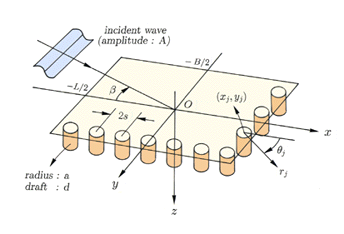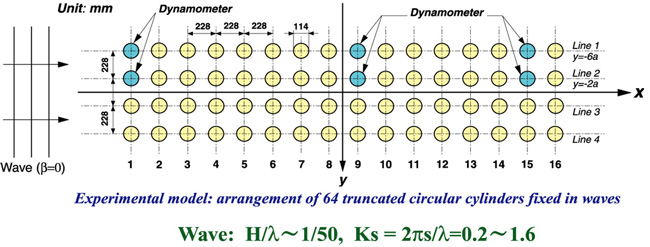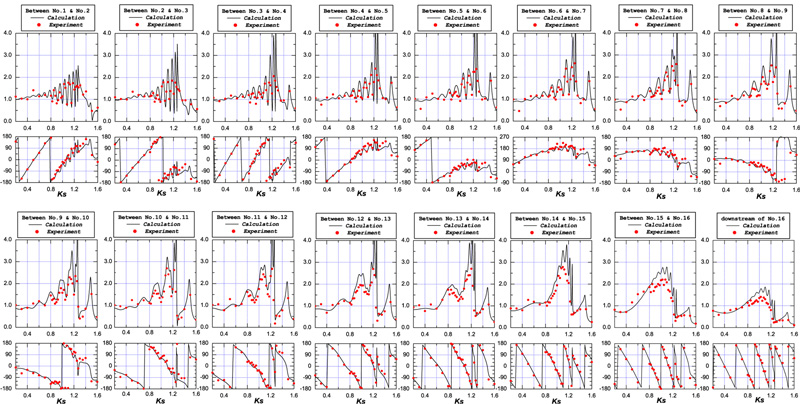

|
A column-supported type is regarded as a good candidate for the very large floating structure (VLFS), because the wave forces and thus the motion in waves are expected to be small relative to a pontoon type VLFS. However, we have to study the followings in this type:
|
 |

|
The right-upper figure shows the coordinate system and notations used in the theory.
Experiments are also conducted using 64 truncated cylinders (shown in the top figure and also above) arranged in 4 rows and 16 columns with equal separation distance both in the x- and y-axes. The wave-induced 3-component forces on an element cylinder and the wave elevation along the longitudinal center line are measured. The figure below is one example of the wave elevation measured at 16 position along the center line, showing good agreement with measurements. We can see also that the measured values near the resonant frequency (about Ks=1.26) are smaller than computed values, which may be attributed to viscous effects due to, for instance, development of the oscillating boundary layer on upwave cylinders. |
 |
 Link to
related References Link to
related References
 Home Page of Professor Kashiwagi
Home Page of Professor Kashiwagi
|
